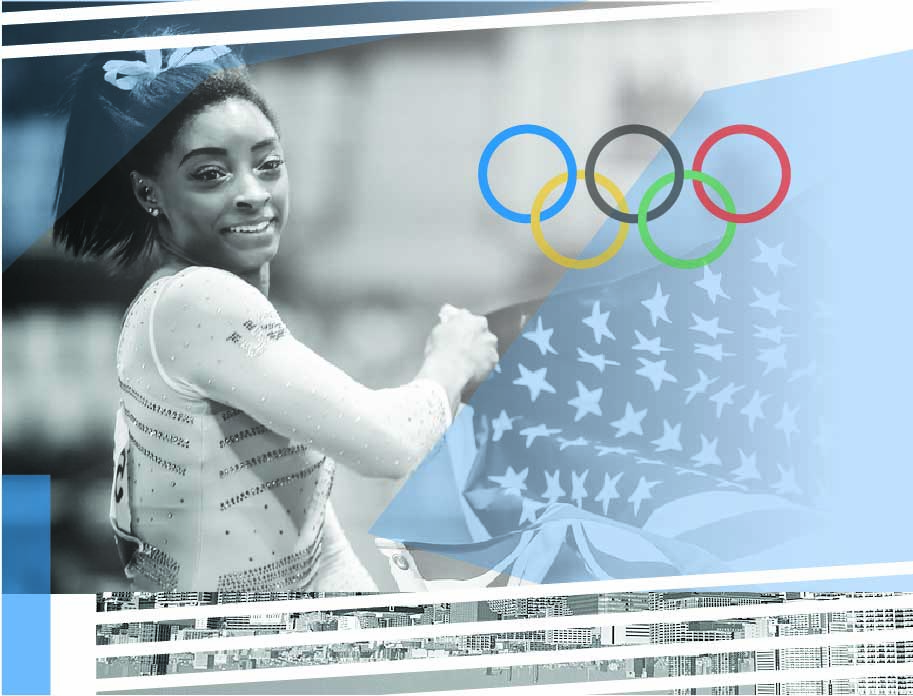
Prof Brett Hutchins
Professor of Media and Communications and Head of the School of Media, Film & Journalism at Monash University in Melbourne, Australia. He is presently completing a collaborative three-year Australian Research Council funded project (DP200103360) that investigates the communication of environmental and sustainability issues in sport.

Dr Ben Glasson
Postdoctoral Research Fellow in environmental communication and media in the School of Media, Film & Journalism at Monash University. His research is focused on the Olympic Games’ sustainability efforts from a critical discourse perspective.

Section 1: Tokyo & Mega-Events
- Public relations as the key in the 2020 Tokyo Olympic and Paralympic Games
- Tokyo 2020, East Asian geopolitics and Olympic diplomacy
- Anti-sex beds? Fake news! : why this video went massively viral?
- Power sharing: Olympic sponsorship and the athlete’s personal brand
- The Tokyo 2020 Organizing Committee’s veil of effective public relations to help save itself and the start of the Games
- Host city and mega-events: Olympic legacy in Japan
- The rise of critical consciousness in Japan: An intangible and unintended legacy of the Tokyo 2020 Olympic Games
- The soft power of the Olympics in the age of Covid 19
- Tokyo 2020 Olympic Games, nationalism, identity and soft power
- The typhoon games
- Environmental leadership showcased in the Olympic Games
- Simone Biles and prioritizing athlete well-being
- How the female athletes of the Tokyo Olympics are reframing the way we think about motherhood
- Deliver a medal or apologize: A daunting task imposed on Japanese Olympians
- What happened to Rule 40 at Tokyo 2020?
- Cultural programming at Tokyo 2020: the impossible Olympic festival city?
- Lessons from Tokyo: the impact of the Paralympics in Japan
- Let’s play! Inspiring an inclusive mindset with a hands-on Paralympic experience for children and teenagers in Japan.
- The Olympic & Paralympic sponsorship without category exclusivity: Background of sponsorship exclusivity in Olympic and Paralympic Games (OPG)
- Counting cases, counting medals: Containing the Olympic contagion during the Tokyo Games
- The Olympic Games and ambush marketing via social media
- Pride and burden of striving for perfection at the Olympics
The Opening Ceremony of the Tokyo 2020 Olympics features an eye-catching sequence in which traditionally dressed Japanese performers manoeuvre large timber circles with ropes into the formation of the Olympic rings. Australian television commentators emphasise the powerful symbolism of the rings and state that they represent a “Green Olympic legacy for future generations”.
Reflecting the ongoing fetishization of legacy by the Olympic movement, the commentators explain that the wooden rings are crafted from timber grown since Tokyo’s previous Olympiad in 1964. Seeds planted by athletes at this time grew into commemorative trees that were harvested and crafted for this performance in 2021. New seeds are now planted in the place of the harvested trees to continue a virtuous circle of environmental symbolism posing as sustainability.
Staged among the silence of a locked down city in a state of emergency triggered by Covid-19, these Games continued the damaging environmental legacy of the city’s previous summer Olympiad over 50 years ago. The contemporary reality of climate crisis was projected to the world as athletes were “tortured” by dangerously high temperatures during “the hottest Games in history”. The Russian Olympic Committee tennis player, Daniil Medvedev, played a match in “suffocating” heat and humidity that required two medical time outs and a visit from a trainer. Asked by the umpire if he could continue the match, he responded, “I can finish the match, but I can die. If I die, are you going to be responsible?”
These conditions realised the warnings made prior to the Games, with the mean annual temperature in Tokyo having risen 2.86 degrees since 1900 (three times as fast as the world’s average). Prior to the Games, the marathon and race walk events were relocated 830 kilometres north to Sapporo, a city that is, on average, five degrees cooler than Tokyo in summer. Even with this move, viewers observed runners and walkers resorting to the frantic use of ice packs as they raced and the intermittent need for wheelchairs at the finish line as exhausted athletes collapsed into them.
The weather conditions on display for viewers around the world follow from the severe typhoons that interrupted the 2019 Rugby World Cup in Japan, which were also widely regarded as evidence of climate change disruption. In Tokyo, the reality of climate crisis also visited the mythical home of the Olympics, as out-of-control wildfires threatened the UNESCO World Heritage site of Ancient Olympia in Greece. The Greek Prime Minister, Kyriakos Mitsotakis, stated that the fires evidence “the reality of climate change”.
The IOC is ill-prepared and unwilling to confront with this reality. It styles itself as an environmental leader, but a superficial focus on sustainability leadership and collaboration distract from the carbon intensity of the Games. Amounting to little more than magical thinking, the IOC professes faith in technology and an ability to motivate behaviour change in addressing environmental problems – while demonstrating little appetite for change itself.
A mainstay of Olympic environmental efforts thus far are low-quality carbon offsets generated through The Olympic Programme (TOP) Partner, Dow Chemical, and their “Climate Solutions Framework”. Questions need to be asked about the effectiveness of the nominated carbon offsetting projects attached to the Dow–IOC Framework, especially given the connections between biomass production and deforestation in the countries where these projects are based.
Spectator travel and related emissions usually account for over half the Games’ total carbon footprint. The spectator-less Tokyo Olympics demonstrated the show can go on even without the international movement of tourists. Reduced spectatorship is consistent with the “New Norm” commitment of the IOC to scale back the Games’ physical impacts, yet is not on the agenda for the future. The latest host of a Games, Brisbane (in 2032), plans to build new aquatic, basketball, gymnastics and boxing venues, in addition to a $1 billion (AUD) expansion of the pre-existing main stadium.
Just after Tokyo 1964 is referenced in the broadcast of the Opening Ceremony, a segment presents a message from Tony Estanguet, three-time Olympian and President of the Paris 2024 Organising Committee. Projecting a clean and bright Olympic future, and in language straight out of the IOC sustainability playbook, Estanguet claims “we are building a new model for the Games with minimum footprint on the planet and maximum legacy for people”. Such hyperbole is at odds with the profligacy that is built into the Olympic ethos and its value as a broadcasting, sponsorship and city-marketing spectacle.
Tokyo 2020 offered platitudes, symbolism, and feel-good distraction for national audiences during a worldwide pandemic. But there is no sign that Olympic officials are willing to confront the fundamental contradiction between a rapidly heating world and a carbon-intensive global media spectacle that glorifies commercial and human excess.

